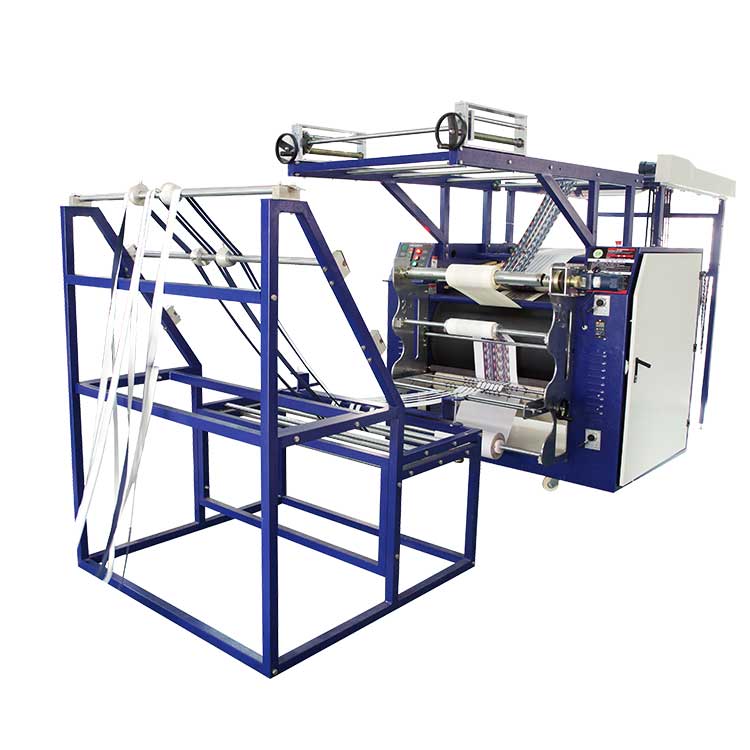The Roller Transfer Machine For Ribbon Printing is a vital piece of equipment for businesses engaged in ribbon production. Proper maintenance of this machine ensures consistent performance and prolongs its lifespan. This guide provides comprehensive instructions on maintaining and servicing the Roller Transfer Machine to maximize efficiency and minimize downtime.

Regular Maintenance Procedures:
Cleaning:
Daily cleaning is essential to prevent the buildup of ink residues and debris on the rollers, platens, and other components.
Use a soft, lint-free cloth dampened with a mild cleaning solution to wipe down the surfaces. Avoid using harsh chemicals that may damage the machine.
Pay special attention to areas prone to ink accumulation, such as the roller surfaces and transfer belts.
Lubrication:
Lubricate moving parts according to the manufacturer's recommendations. Use high-quality lubricants suitable for the specific components of the machine.
Inspect bearings, gears, and shafts regularly for signs of wear or inadequate lubrication. Replace or lubricate as necessary to prevent friction and extend component life.
Alignment:
Check the alignment of rollers, belts, and pulleys periodically to ensure smooth operation and accurate printing.
Use precision measurement tools to verify alignment and make adjustments as needed. Misalignment can lead to poor print quality and excessive wear on components.
Inspection:
Conduct routine inspections of the machine's mechanical, electrical, and pneumatic systems.
Look for signs of wear, damage, or malfunction, such as loose bolts, frayed wires, or leaking hoses.
Replace worn or damaged parts promptly to prevent breakdowns and avoid compromising safety.
Calibration:
Calibrate temperature, pressure, and speed settings according to the type of ribbon and printing requirements.
Use calibrated instruments to verify and adjust settings as needed for optimal printing performance.
Document calibration procedures and results to ensure consistency and repeatability.
Safety Checks:
Prioritize safety by inspecting safety guards, emergency stop buttons, and other safety features regularly.
Ensure that operators are trained in proper safety protocols and aware of potential hazards associated with machine operation.
Address any safety concerns promptly to mitigate risks and comply with safety regulations.
Software Updates:
Keep software and firmware up to date to benefit from improvements in performance, reliability, and compatibility.
Follow the manufacturer's recommendations for installing updates and patches to minimize disruptions and security risks.
Training and Documentation:
Provide comprehensive training for operators and maintenance personnel on the proper operation and maintenance of the Roller Transfer Machine.
Maintain detailed documentation, including manuals, schematics, and maintenance logs, to support training efforts and facilitate troubleshooting.
Emergency Maintenance Procedures:
Emergency Shutdown:
In the event of a malfunction or safety hazard, initiate an emergency shutdown by pressing the emergency stop button or following the manufacturer's recommended procedure.
Secure the machine and surrounding area to prevent accidents or further damage until the issue can be addressed.
Troubleshooting:
Refer to the troubleshooting guide in the machine's manual or documentation to diagnose and resolve common issues.
Follow step-by-step instructions and safety precautions to avoid exacerbating the problem or causing additional damage.
Technical Support:
If unable to resolve the issue internally, contact the manufacturer or authorized service provider for technical support and assistance.
Provide detailed information about the problem, including any error codes or symptoms observed, to expedite the resolution process.
Conclusion:
Proper maintenance of the roller transfer machine for Ribbon Printing is essential for ensuring reliable performance and maximizing productivity. By following the recommended maintenance procedures outlined in this guide, businesses can minimize downtime, extend the lifespan of the equipment, and achieve consistent high-quality printing results. Regular inspection, cleaning, lubrication, calibration, and safety checks are crucial for maintaining peak operational efficiency and preventing costly breakdowns. Additionally, emergency maintenance procedures and access to technical support are essential for addressing unexpected issues promptly and minimizing disruptions to production.